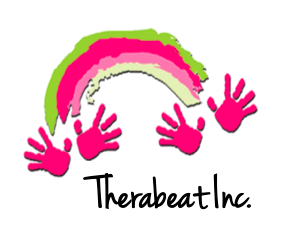Hearing loss affects nearly one in five children by age 18 in the U.S., and without intervention, it can significantly impact speech, language development, education, and cognition. It can be congenital, delayed-onset, or acquired. Timely intervention is crucial for optimal outcomes, and a range of rehabilitation options—including hearing aids, cochlear implants, bone-anchored devices, and assistive technologies like frequency-modulating systems—can help mitigate the adverse effects of hearing loss and support a child’s communication and developmental needs.
Music therapy offers significant benefits for children with hearing loss by enhancing their auditory perception, communication skills, and overall development. The structured use of music can help these children strengthen their ability to detect, differentiate, and interpret sounds, particularly when integrated with assistive listening devices like hearing aids and cochlear implants. Music therapy enhances speech development, articulation, and language acquisition through rhythmic training, vocal exercises, and instrumental play.
Common Music Therapy Goals for Clients with Hearing Loss:
Goal: Language Development
Objectives:
Increase and appropriate use of vocabulary.
Increase and appropriate use of vocabulary.
Improve sentence structure.
Develop pragmatic language skills.
Interventions:
Songwriting: Clients create lyrics to familiar melodies using target vocabulary words to reinforce word usage and sentence formation.
Interactive Instrument Play: The therapist introduces vocabulary by labeling and describing musical instruments (ex: "This drum is round and big") while encouraging children to use these words in conversation.
Movement to Music: Clients respond to spatial concepts by incorporating directional movements (ex: reaching high, moving to the left, behind) while listening to songs with embedded cues.
Musical Categorization: Children use musical instruments to represent different categories such as shapes (round tambourine for a circle, rectangular drum for a rectangle) and sizes (small shaker for small, large drum for big), reinforcing conceptual understanding through music.
Goal: Speech Production
Objectives:
Increase vocalization and expressive speech.
Improve natural speech rhythms, pitch, and inflections.
Enhance production of target speech sounds in commonly used vocabulary.
Interventions:
Singing: Clients sing along to songs that emphasize articulation and pitch variation, helping to improve speech clarity.
Children’s Songs with Speech Sounds: Songs like Old MacDonald Had a Farm emphasize repetitive phonemes, aiding in speech sound production.
Call-and-Response Exercises: The therapist sings a phrase or makes a vocal sound, and the child echoes it, reinforcing speech rhythm and articulation.
Group Music Making with Vocal Cues: During instrument play, clients take turns and vocalize simple phrases (ex: "My turn" or "Your turn") before playing an instrument to encourage verbal engagement.
Goal: Improve Listening Skills
Objectives:
Enhance sound detection and differentiation
Improve sound identification and comprehension
Strengthen auditory memory and sequencing
Interventions:
Stop-and-Go Activity: Clients move to the beat of a rhythmic instrument and freeze when the sound stops, reinforcing attentiveness and sound recognition.
Instrument Sound Discrimination: Clients listen to two different instruments and determine if the sounds are the same or different, improving auditory discrimination skills.
Follow-the-Sound: The therapist plays an instrument in different locations, and the client must turn their head or point toward the sound source, encouraging localization.
Movement-Based Listening Games: Clients engage in movement-based activities that require responding to auditory instructions embedded within songs, enhancing comprehension and reaction to spoken language.
Goal: Social Skills
Objectives:
Improve turn-taking and cooperative play
Strengthen ability to follow multi-step directions
Develop appropriate expression through music
Interventions:
Instrument Play in Pairs or Groups: Clients take turns playing instruments and engage in call-and-response drumming activities to foster teamwork.
Collaborative Songwriting: Clients work together to create a song, using musical elements to express feelings appropriately.
Additionally, music therapy provides a multi-sensory experience by incorporating visual, tactile, and kinesthetic elements, making it accessible for children with varying degrees of hearing loss. Therapists also tailor interventions to match each child’s hearing profile, ensuring an inclusive and effective approach.
In conclusion, music therapy serves as a valuable tool for improving listening skills, facilitating language development, and promoting social-emotional growth in children with hearing loss. Through structured and engaging interventions, children with hearing loss can develop essential communication skills in a fun and meaningful way, empowering them to navigate the world with greater confidence and ease.
-Asila Folds, Music Therapy Intern
References:
Lieu, J. E. C., et al (2020). Hearing loss in children: A review. JAMA, 324(21), 2195–2205.
Edwards, J. (Ed.). (2016). The Oxford handbook of music therapy (pp. 225–248). Oxford University Press.
Schraer-Joiner, L. (2014). Music for children with hearing loss: A resource for parents and teachers. Oxford University Press.

